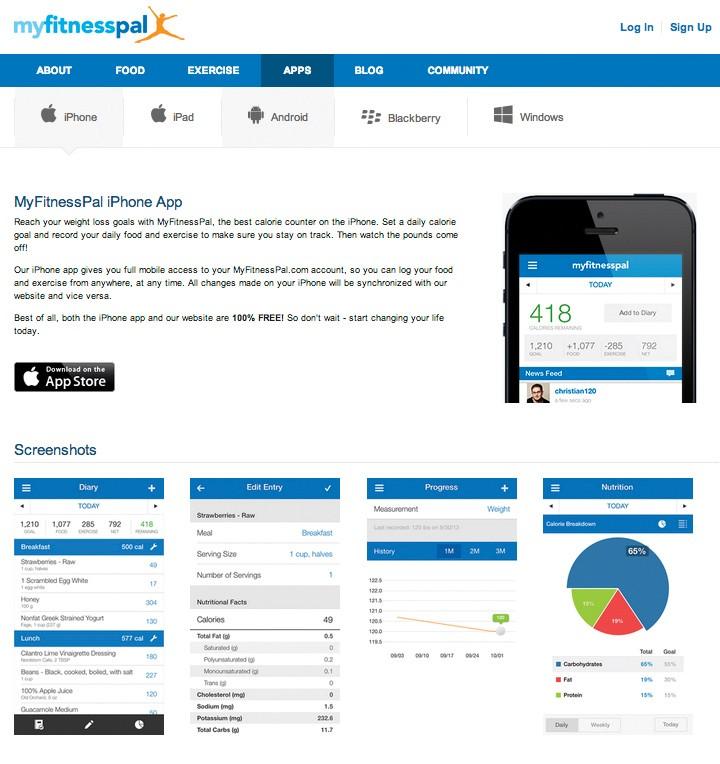Campus Dining uses phone app to help students make healthy choices

GVL/Courtesy, http://www.myfitnesspal.com/mobile/iphone
Mar 9, 2014
In accordance with National Nutrition Month, Grand Valley State University’s Campus Dining has announced that nutritional information will be at the fingertips of its customers through the phone app “MyFitnessPal.”
The app, free on both Apple and Android mobile devices, provides real-time health monitoring and allows users to track meals, exercise and weight loss over days, weeks and months.
“Students now have the power to make informed choices when dining on campus,” said Deb Rambadt, campus dining marketing manager, in a press release. “We are happy this information is now accessible to assist students in making decisions that are best for them.”
Campus dining customers can search for campus dining items manually by selecting the food item and the food venue. If the item is from a convenience store, the customer can scan the item’s bar code for easy input. App users can also add friends to “MyFitnessPal,” making it easy for them to connect with people they know for support.
The app also lets users choose their own fitness goals. It includes a section that gives information to users about the percentage of each food group they need to change to create a balanced diet. MyFitnessPal has also partnered with other healthy eating apps, allowing users to have a consolidated view of all the information they have collected.
However, GVSU nutrition professor Steven Nizielski warns that simply counting calories is not the proper way to build a healthy diet, as this often leads to people making unhealthy choices.
“For example, fat-free salad dressings are generally a poor choice that reveals a lack of information upon which to make good decisions,” Nizielski said. “Fat-free salad dressings replace healthy fats with sugar — not a good choice. Just use the regular version sparingly. Better yet, use a vinaigrette dressing that has less fat naturally, without the added sugar.”
He said the best way to build a healthy diet is to focus on eating a variety of foods from all food groups, and he suggests that the best approach is to eat a plant-based diet with frequent fish and poultry consumption and to only occasionally eat red meat.
Nizielski also recommends students drink less sugar-sweetened beverages and avoid processed foods and products with hydrogenated oil.
“The behavioral patterns that we establish when we are young tend to stick with us for life,” he said. “So if we eat poorly when we are students, most of us will eat poorly for the rest of our lives. It’s not that we can’t change our behaviors, it’s just that it is increasingly difficult to do so the older we get.”

























